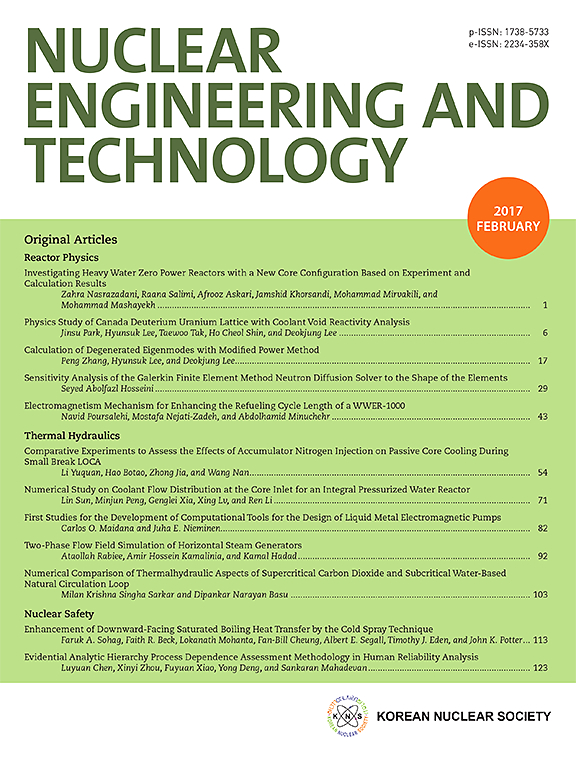Design of high intensity radio frequency quadrupole accelerator for Suzhou neutron source
IF 2.6
3区 工程技术
Q1 NUCLEAR SCIENCE & TECHNOLOGY
引用次数: 0
Abstract
Neutrons are essential for material structure analysis and scientific research. The neutron source at Suzhou Laboratory employs a proton linear accelerator, with its low-energy section comprising two pulsed RFQ accelerators. In the beam dynamics design, operating at 324 MHz, two RFQs accelerate proton and negative hydrogen beams from 50 keV to 3 MeV, achieving a 98.3 % transmission efficiency over a 3.385 m electrode length. In the radio frequency (RF) design, a four-vane structure with Dipole Stabilizer Rods (DSRs) was adopted to mitigate mode mixing. Thirty-six tuners provide a ±2 MHz frequency tuning range, while optimized undercuts ensure field uniformity. Simulation of the entire cavity shows an eigenmode frequency of 323.95 MHz and a peak power loss of 203 kW. Multi-physics analysis indicates a cavity frequency shift of 20 kHz due to thermal deformation. This study presents the beam dynamics, RF structure, and multi-physics analysis, confirming that the RFQ design meets operational requirements.
苏州中子源高强度射频四极加速器设计
中子在物质结构分析和科学研究中是必不可少的。苏州实验室的中子源采用质子直线加速器,其低能部分包括两个脉冲RFQ加速器。在束流动力学设计中,工作在324 MHz,两个rfq将质子和负氢束流从50 keV加速到3 MeV,在3.385 m的电极长度上实现了98.3%的传输效率。在射频(RF)设计中,采用了带有偶极稳定棒(DSRs)的四叶片结构来减轻模态混频。36个调谐器提供±2 MHz的频率调谐范围,而优化的削弱确保场均匀性。仿真结果表明,整个腔的特征模频率为323.95 MHz,峰值功率损耗为203 kW。多物理场分析表明,由于热变形,腔频移为20khz。本研究提出了波束动力学、射频结构和多物理场分析,证实了RFQ设计满足操作要求。
本文章由计算机程序翻译,如有差异,请以英文原文为准。
求助全文
约1分钟内获得全文
求助全文
来源期刊

Nuclear Engineering and Technology
工程技术-核科学技术
CiteScore
4.80
自引率
7.40%
发文量
431
审稿时长
3.5 months
期刊介绍:
Nuclear Engineering and Technology (NET), an international journal of the Korean Nuclear Society (KNS), publishes peer-reviewed papers on original research, ideas and developments in all areas of the field of nuclear science and technology. NET bimonthly publishes original articles, reviews, and technical notes. The journal is listed in the Science Citation Index Expanded (SCIE) of Thomson Reuters.
NET covers all fields for peaceful utilization of nuclear energy and radiation as follows:
1) Reactor Physics
2) Thermal Hydraulics
3) Nuclear Safety
4) Nuclear I&C
5) Nuclear Physics, Fusion, and Laser Technology
6) Nuclear Fuel Cycle and Radioactive Waste Management
7) Nuclear Fuel and Reactor Materials
8) Radiation Application
9) Radiation Protection
10) Nuclear Structural Analysis and Plant Management & Maintenance
11) Nuclear Policy, Economics, and Human Resource Development
 求助内容:
求助内容: 应助结果提醒方式:
应助结果提醒方式:


